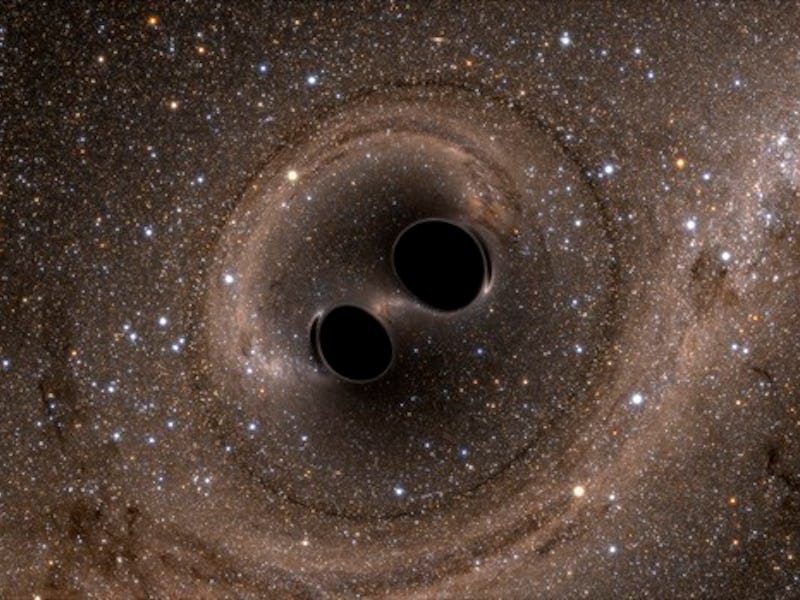Gravitational Waves Can Unveil Hidden Dimensions, Say Scientists
In 2015, scientists first detected gravitational waves. Now they're figuring out how to use them.

It’s been two years since scientists discovered evidence of gravitational waves. Now, they’re figuring out what we can do with them. Recently, they found a huge, early contender: Using them to unveil the knotted-up extra dimensions hiding, undetected, in spacetime.
A paper published Wednesday by researchers at the Max Planck Institute for Gravitational Physics explains two ways gravitational waves could be used to confirm the existence of hidden dimensions: By identifying unusually large numbers of high-frequency waves, or by detecting a “breathing” effect in the shape of the waves.
So far, extra dimensions beyond our common four are only theoretical; we’ve yet to uncover experimental evidence that they exist. And yet, while we all walk through the basic three spatial dimensions and move inexorably forward through the fourth — time — the best evidence of theoretical physics suggests there must be more than just four dimensions for the universe to work.
An image shows how a hyper-dimensional object might "project' into, and be perceived in, the classical universe.
While they’ve served humanity extremely well, the two theories established by physicists like Albert Einstein and Niels Bohr in the early 20th century to describe the mechanics of the universe are incomplete. Einstein’s general relativity theory is very good at explaining big things, like the ebbs and flows of time, the expansion of the universe, and gravity. Bohr’s quantum mechanics theory is better at explaining small things, like particles and electromagnetism. These theories, perhaps unsurprisingly, don’t work well together. Ask them to explain phenomena that impinge on the border between macro and micro worlds — like black holes — and they start to fall apart.
That’s why modern physicists have probed deeper, suggesting even more complex universal models that require more than just the bland four dimensions our species observes. In string theory, one of the most promising attempts to unify physics, the tiniest particles are in fact vibrating strings twisted into impossible higher-dimensional shapes. String theory suggests that there are way more dimensions than our usual four.
If these higher dimensions exist, then gravity — which moves through anything — would move through them. (This might explain why gravity is so weak compared to other forces — it’s getting lost in other dimensions.) In the paper, the researchers explain that the gravitational waves would be reshaped by these tiny, hidden extra dimensions in a manner that would cause them to resonate more at higher frequencies. The waves would also cause a more complex, multi-dimensional expansion and contraction resembling breathing.
Most gravitational wave detectors that are planned or already exist are tuned to detect powerful, low-frequency waves, which rules out detecting high-frequency waves for the time being. But the scientists propose that getting multiple detectors to work together could help them spot a powerful enough breathing effect.
Unfortunately, breathing waves wouldn’t confirm extra dimensions on their own. There are at least a few other possible explanations for the effect. But, if scientists do spot them, it would likely mean humanity’s first peek into higher dimensions.